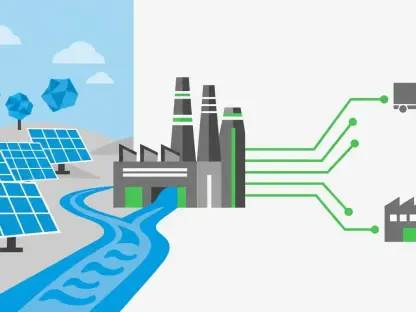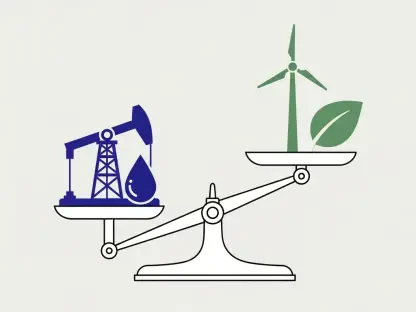For decades, Meghalaya’s coal reserves fueled economic growth but ravaged its environment. The state relied on rat-hole mining—a dangerous practice involving narrow tunnels, often worked by children, causing severe injuries and fatalities. Environmental destruction and human suffering were rampant.
Environmental and Human Cost
Catastrophic Impact
The coal mining methods used in Meghalaya had catastrophic environmental consequences. Between 2001 and 2012, Meghalaya lost over 60,000 hectares of forest due to rampant mining activities. This significant deforestation led to severe soil erosion, landslides, and the destruction of natural habitats, making the land less fertile and destabilizing the ecosystem. Rivers in the region, such as the Lukha, became heavily polluted with sulfur and heavy metals due to acid mine drainage, turning the once-pristine waters into toxic hazards unfit for human consumption or aquatic life.
The environmental degradation extended beyond the immediate vicinity of the mines. The loss of forest cover also affected the climate and water cycles in Meghalaya. Forested areas play a crucial role in maintaining ecological balance; their absence led to irregular rainfall patterns, reduced groundwater recharge, and increased frequency and intensity of natural disasters like floods. The long-term impacts of this destruction are profound, affecting not just the present but also future generations’ ability to live sustainably in the region.
Tragic Human Toll
The human cost of rat-hole mining was equally devastating. Since 2012, there have been at least 60 reported miner deaths, but the actual count is likely much higher due to numerous unreported incidents. One of the most tragic accidents occurred in December 2018 in Ksan, where 20 miners were trapped in a flooded mine; only five escaped, while the rescue efforts for the remaining 15 ended in failure. These events highlighted the dangerous working conditions faced by miners, many of whom are compelled by poverty to work in these hazardous environments without adequate safety measures.
Illegal mining operations continued to flourish in Meghalaya, revealing the vast scale of environmental and human rights violations. The National Green Tribunal (NGT) reported that over 24,000 coal mines operated illegally in the Jaintia Hills alone. These covert operations went largely unchecked, endangering the lives of miners and local communities while depriving them of basic human rights and dignity. The persistence of illegal mining highlighted the stark reality of economic desperation that underpins such practices and the dire need for regulatory intervention.
Regulatory Actions and Challenges
The 2014 Ban
In response to the escalating crisis, the National Green Tribunal (NGT) imposed a complete ban on coal mining and transportation in Meghalaya in 2014. This decision was momentous, aiming to curb the rampant environmental degradation and human rights abuses linked to the industry. The ban was intended to force a reevaluation of mining practices and pave the way for more sustainable methods. However, the implementation of this groundbreaking directive proved to be fraught with challenges. Thousands of families depended on mining for their livelihoods, and vested interests opposing the ban were formidable.
Despite its noble intentions, the enforcement of the 2014 ban was far from effective. The region’s heavy reliance on coal mining for employment and income made it difficult to shut down operations entirely. Illegal mining persisted, often carried out discreetly under the cover of night, which exposed the limitations of regulatory oversight. The ban highlighted the difficulty of striking a balance between ecological responsibility and economic survival, proving that without comprehensive support systems and alternative livelihoods, mere prohibition cannot address deeply entrenched socio-economic issues.
Supreme Court’s Intervention
In a decisive move on July 3, 2019, the Supreme Court upheld the NGT’s ban but provided a blueprint for moving forward. The court’s ruling mandated the establishment of a ₹100 crore environmental restoration fund and outlined conditions under which coal mining could resume—namely, through scientific mining practices that ensured sustainability and worker safety. This landmark decision aimed to redefine Meghalaya’s mining industry by mandating strict regulatory compliance, including environmental impact assessments, controlled waste disposal, and land reclamation, all under rigorous administrative oversight.
Despite the court’s clear directives, the transition from unregulated to regulated mining processes was far from smooth. Substantial reforms were required, including new administrative frameworks, capacity building among local authorities, and infrastructure development to support scientific mining. The slow pace of these reforms underscored persistent enforcement failures and bureaucratic bottlenecks. These hurdles highlighted the complexities of translating judicial mandates into ground realities, particularly in a region where illegal operations were deeply entrenched.
Transition to Scientific Mining
Bureaucratic Bottlenecks
Efforts to transition to scientific mining were fraught with delays and bureaucratic hurdles. Although the legal framework allowed for scientific practices, the administrative machinery was sluggish in processing applications and approvals. By the time 2024 arrived, Meghalaya had received 36 applications for scientific mining licenses. However, only a handful of these applications progressed past the initial stages—13 secured prospecting licenses, and just four obtained prior approval for full-scale leases. This slow progress was a clear indication of the challenges in moving from a framework of prohibition to one of regulated, sustainable mining.
These bureaucratic bottlenecks not only delayed the initiation of scientific mining but also perpetuated existing illegal mining practices. Desperation among local miners led to unlawful operations resuming, often under the radar, to support their families amid the waiting period. The lack of timely approvals and clear communication from the authorities sowed frustration and suspicion among those who depended on the mining industry for their livelihood, further complicating the transition period and underscoring the need for more efficient administrative processes.
Initial Approvals
A significant turning point came in January 2025 when the central government granted approval to three local operators to begin scientific coal extraction in West Khasi Hills and East Jaintia Hills—regions historically devastated by unregulated mining. This approval was a crucial milestone, signaling the commencement of legally sanctioned, environmentally responsible mining activities. Chief Minister Conrad K. Sangma’s inauguration of the state’s first scientific coal mine in Saryngkham-A, Byndihati, East Jaintia Hills, was a momentous occasion, symbolizing the state’s commitment to turning a new leaf in its mining journey.
However, despite securing state-level clearances, Meghalaya faced further delays as it awaited final approval from the Union Coal Ministry. This lag caused considerable frustration among local miners who were eager to resume work within a regulated framework. Concerns arose that continued delays might drive these miners back to illegal practices. The approval process, while marking significant progress, also highlighted the intricate layers of governance required to manage such a transition and emphasized the importance of maintaining momentum to prevent regression into past practices.
Future Prospects
Economic Potential
The shift to scientific mining holds immense promise for Meghalaya’s economic landscape. Properly regulated scientific mining operations have the potential to create stable jobs, thereby providing reliable income and improving the quality of life for countless former rat-hole miners. Moreover, the structured approach to mining can help stabilize the state’s revenue stream, contributing to the overall financial health of Meghalaya. The potential integration of local communities into the formal mining sector could also lead to broader socioeconomic benefits, including better working conditions, healthcare access, and educational opportunities for miners’ families.
However, achieving these economic benefits requires more than just industrial efficiency; it necessitates a holistic approach to community engagement and support. Training programs for former illegal miners are essential to equip them with the skills needed to work in regulated environments. Such initiatives, supported by state and central governments, could facilitate the transition of labor from hazardous, unregulated practices to safer, scientifically validated ones. Success in this sector would thus be measured not merely by economic indicators but by the tangible improvements in miners’ lives and the sustainable development of their communities.
Balancing Growth and Conservation
Economic development must not come at the cost of environmental sustainability—a lesson starkly learned through Meghalaya’s past experiences with rat-hole mining. Any future growth strategy must therefore incorporate robust conservation measures to safeguard the region’s natural heritage. Sustainable mining policies should aim for a balance where resource extraction benefits all stakeholders while ensuring that the environment remains protected for future generations. This involves adhering to stringent environmental regulations, conducting thorough impact assessments, and implementing effective waste management practices to mitigate the adverse effects of mining activities.
Adopting a balanced approach also means embedding principles of conservation within the economic framework of mining operations. Controlled blasting techniques and regulated waste disposal methods need to become standard practices, reducing underground disturbances and preventing acid mine drainage. Additionally, regular land reclamation and afforestation projects should be undertaken to restore mined areas, ensuring that the landscapes are not left barren and toxic. By institutionalizing these practices, Meghalaya can shift from reckless, profit-driven mining to a responsibly managed industry, demonstrating that economic prosperity and environmental stewardship can coexist harmoniously.
Comprehensive Rehabilitation
Fund Allocation
The Supreme Court’s mandated ₹100 crore environmental restoration fund highlights the urgent need to repair the extensive damage caused by unregulated mining. Effective allocation and utilization of these funds are critical to achieving meaningful rehabilitation. Afforestation projects to replant and restore forest cover, soil stabilization initiatives to prevent further erosion, and comprehensive pollution control measures are essential components of this rehabilitation strategy. The dynamic transformation of degraded lands into productive and sustainable ecosystems will not only mitigate environmental risks but also enhance biodiversity and promote climate resilience.
Community participation is vital to the success of these rehabilitation efforts. Inclusive planning processes that involve local communities can ensure that restoration projects address the needs and priorities of those directly affected by mining activities. Transparent management of the restoration fund, coupled with accountability mechanisms, is crucial to prevent misallocation of resources which could undermine rehabilitation initiatives. Engaging local stakeholders in monitoring and evaluating these projects can foster a sense of ownership, enhance the effectiveness of restoration activities, and build trust between authorities and the communities they serve.
Global Best Practices
Meghalaya can draw valuable lessons from successful global models of responsible mining. For instance, Andrew Forrest’s Fortescue Metals Group in Australia is pioneering a transition to green hydrogen and electrification, showing that large-scale resource extraction can align with environmental responsibility. Fortescue’s commitment to minimizing carbon footprints by adopting renewable energy sources sets a precedent for integrating sustainability into mining operations. Another example is Indonesia’s High-Pressure Acid Leach (HPAL) technology, which enables efficient processing of low-grade ores without causing ecological devastation, illustrating a possible path for Meghalaya to follow.
Adapting these global best practices to the local context in Meghalaya could redefine the state’s coal industry. Innovations in sustainable mining technologies, coupled with a robust regulatory framework, can significantly reduce the environmental impact while maximizing economic benefits. Moreover, collaborations with international experts and institutions can facilitate the transfer of knowledge and technology, enhancing local capacities for responsible resource management. By embracing these innovative approaches, Meghalaya can position itself as a leader in sustainable mining, setting an influential example for other regions grappling with similar challenges.
Determining Meghalaya’s Future
For many years, the coal reserves in Meghalaya have been the backbone of its economic development, but this progress came at an enormous cost to the environment. The state used a method known as rat-hole mining to extract the coal. This practice involves digging narrow, horizontal tunnels that are extremely hazardous. These tunnels are so small that often only children can navigate them, and the work they do is incredibly dangerous, leading to a high number of injuries and deaths.
The environmental consequences were severe as well. Rat-hole mining caused substantial damage to the land and ecosystems in Meghalaya. This type of mining leads to deforestation, loss of biodiversity, and contamination of water sources. The rivers and streams in the mining areas became polluted with toxic runoff, affecting not only wildlife but local communities depending on these water sources for their daily needs.
The human toll is equally devastating. Child labor was rampant in these mines, and these children toiled in extremely unsafe conditions. There have been numerous reports of cave-ins and mine collapses, leading to tragic fatalities and life-threatening injuries. Despite the economic benefits brought about by coal mining, the practice of rat-hole mining in Meghalaya has left a trail of environmental destruction and human misery. Efforts are being made to address these issues, but the damage done over decades will take a long time to repair.









